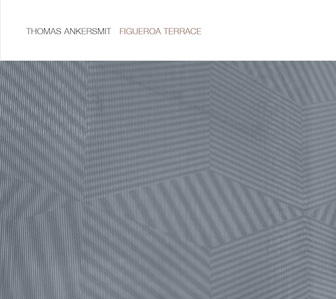Thomas Ankersmit, "Figueroa Terrace"
 Over the last few years, Thomas Ankersmit has been shifting his primary instrument from a saxophone to modular analog synthesizer. Surprisingly, Figueroa Terrace is technically his first album proper, with previous releases consisting of collaborations and live performances. Unsurprisingly, however, is his use of the less immediate setting of the studio to his advantage, constructing a dizzyingly dynamic album length piece that showcases all of the strengths he has shown in previous releases, with an even higher level of polish.
Over the last few years, Thomas Ankersmit has been shifting his primary instrument from a saxophone to modular analog synthesizer. Surprisingly, Figueroa Terrace is technically his first album proper, with previous releases consisting of collaborations and live performances. Unsurprisingly, however, is his use of the less immediate setting of the studio to his advantage, constructing a dizzyingly dynamic album length piece that showcases all of the strengths he has shown in previous releases, with an even higher level of polish.
Even within this studio setting, Ankersmit made a conscious decision to avoid digital sound sources as much as possible, and other than some reverb and recording/editing, this piece is entirely analog.That feel is apparent from the first minutes of Figueroa Terrace, with scattered ring modulated tones skittering along rapidly over a bed of low end drone.The piece never sits still for these initial minutes, and the hyperkinetic nature makes it stand out well without ever becoming dull.
Eventually the composition drops into quiet ringing tones and what sounds like (but is obviously not) a series of rapid microscopic digital delays. It is during these quiet moments the sound of a scraping contact microphone cuts through, jagged and raw, acting as the only non-electronic sound on this entire record.At the same time, the quiet ringing becomes shrill and raw before withdrawing to leave a massive expanse of insect like noises and heavy low end rumble.
Spaciousness becomes the focus for awhile, with synthetic ambience occasionally met with a low end idling bass passage or high frequency radar pings.Chirping beeps and noisy interruptions keep the sense of movement happening before converting into sharp, violent high pitched bits with sweeping low end passages.The final minutes throw everything together to build to an appropriately dramatic climax.High and low frequency passages clash violently, reflecting off one another to build an appropriate sense of tension.At this point, while becoming the most dissonant, it also has the most traditionally composed feel to it, the structure helping guide the noise perfectly.
I have begun to wonder how long it will be before modular synthesizers becomes passé.While some artists, such as Thomas Ankersmit and Robert Piotrowicz use the confusing array of patch bays and adjustment knobs brilliantly, for many others it comes across as just random noise.I mean, damn, Billy Corrigan just did a performance with one, which simply served to emphasize my theory that it can be an instrument that is more about how many modules a person has instead of how well they use them.Figueroa Terrace, however, reassured me that the instrument still has relevance when being manipulated by a true artist and composer, and Ankersmit continues to demonstrate how much of an expert he is.
samples:
 



